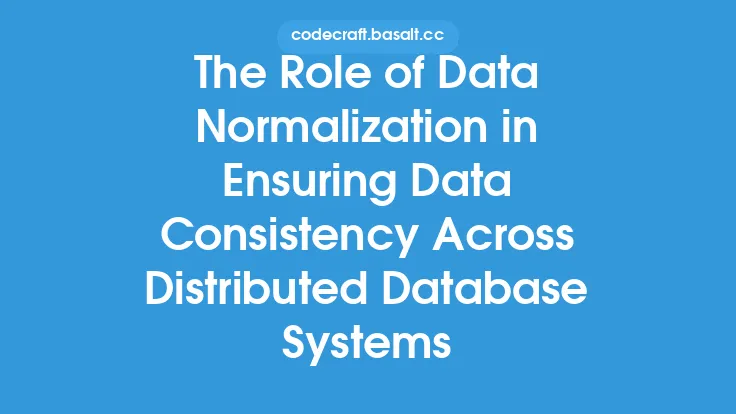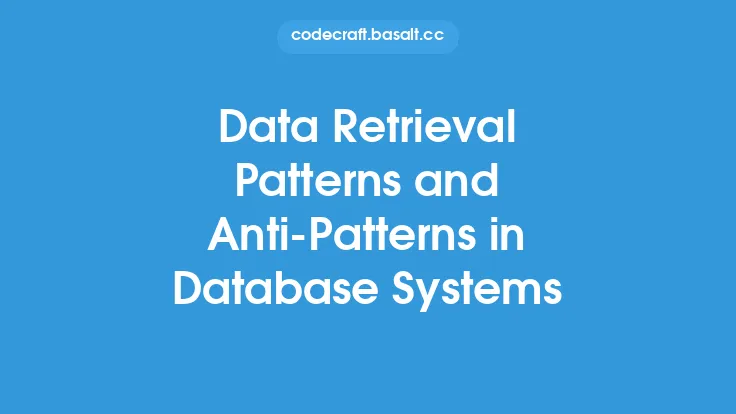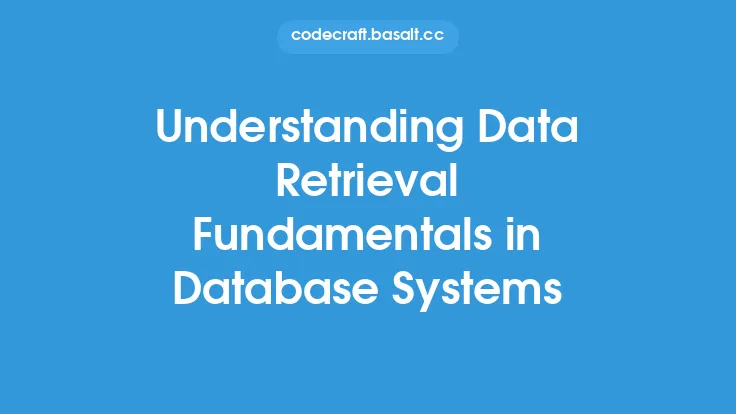Distributed database systems have become increasingly popular in recent years due to their ability to handle large amounts of data and provide high availability and scalability. However, as the data is spread across multiple nodes, ensuring data consistency and efficient data retrieval becomes a challenging task. In this article, we will delve into the concepts of data retrieval and data consistency in distributed database systems, exploring the various techniques and strategies used to achieve these goals.
Introduction to Distributed Database Systems
A distributed database system is a type of database that stores data across multiple physical locations, such as servers or nodes. Each node may contain a subset of the overall data, and the nodes may be connected through a network. Distributed database systems offer several advantages, including improved performance, increased availability, and enhanced scalability. However, they also introduce new challenges, such as ensuring data consistency and providing efficient data retrieval mechanisms.
Data Retrieval in Distributed Database Systems
Data retrieval in distributed database systems involves fetching data from multiple nodes, which can be a complex and time-consuming process. There are several factors that affect data retrieval in distributed database systems, including the distribution of data, the network topology, and the query optimization techniques used. To improve data retrieval performance, distributed database systems often employ techniques such as data replication, data partitioning, and query optimization.
Data Consistency in Distributed Database Systems
Data consistency is a critical aspect of distributed database systems, as it ensures that the data remains accurate and reliable across all nodes. There are several types of data consistency, including strong consistency, weak consistency, and eventual consistency. Strong consistency ensures that all nodes have the same view of the data, while weak consistency allows for temporary inconsistencies. Eventual consistency ensures that the data will eventually become consistent, but it may take some time.
Distributed Transaction Management
Distributed transaction management is a critical component of distributed database systems, as it ensures that multiple operations are executed as a single, all-or-nothing unit. Distributed transactions involve multiple nodes and require careful management to ensure data consistency and integrity. There are several distributed transaction management protocols, including the two-phase commit protocol and the three-phase commit protocol.
Data Replication and Partitioning
Data replication and partitioning are two techniques used to improve data retrieval performance and ensure data consistency in distributed database systems. Data replication involves duplicating data across multiple nodes, while data partitioning involves dividing data into smaller subsets and distributing them across multiple nodes. Data replication can improve data availability and reduce the latency associated with data retrieval, while data partitioning can improve query performance and reduce the amount of data that needs to be transferred.
Distributed Query Processing
Distributed query processing involves executing queries across multiple nodes in a distributed database system. There are several distributed query processing techniques, including query fragmentation, query optimization, and query execution. Query fragmentation involves breaking down a query into smaller sub-queries that can be executed on individual nodes, while query optimization involves selecting the most efficient query execution plan. Query execution involves executing the query on the individual nodes and combining the results.
Consistency Models
Consistency models are used to ensure data consistency in distributed database systems. There are several consistency models, including strong consistency, weak consistency, and eventual consistency. Strong consistency ensures that all nodes have the same view of the data, while weak consistency allows for temporary inconsistencies. Eventual consistency ensures that the data will eventually become consistent, but it may take some time. Consistency models are often used in conjunction with distributed transaction management protocols to ensure data consistency and integrity.
Distributed Database System Architectures
Distributed database system architectures can be classified into several categories, including shared-nothing, shared-disk, and shared-memory architectures. Shared-nothing architectures involve multiple nodes that do not share any resources, while shared-disk architectures involve multiple nodes that share a common disk. Shared-memory architectures involve multiple nodes that share a common memory space. Each architecture has its own advantages and disadvantages, and the choice of architecture depends on the specific requirements of the application.
Conclusion
In conclusion, data retrieval and data consistency are critical aspects of distributed database systems. Ensuring data consistency and providing efficient data retrieval mechanisms are challenging tasks that require careful consideration of the distribution of data, the network topology, and the query optimization techniques used. By employing techniques such as data replication, data partitioning, and query optimization, distributed database systems can improve data retrieval performance and ensure data consistency. Additionally, distributed transaction management protocols and consistency models can be used to ensure data consistency and integrity. As distributed database systems continue to evolve, it is essential to understand the concepts and techniques used to achieve data retrieval and data consistency in these systems.





